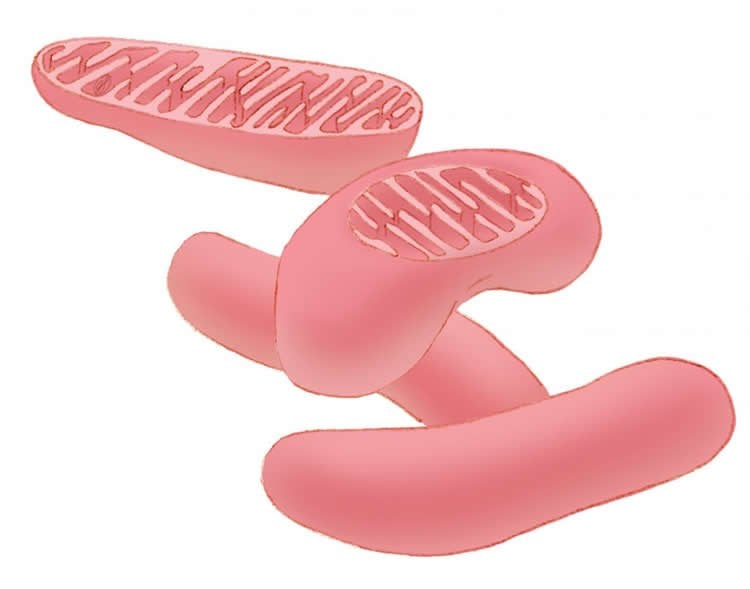PINK1 protein crucial for removing broken-down energy reactors.
Cells are powered by tiny energy reactors called mitochondria. When damaged, they leak destructive molecules that can cause substantial harm and eventually kill brain cells. Scientists at the NIH’s National Institute of Neurological Disorders and Stroke (NINDS) showed that a protein called PINK1 that is implicated in Parkinson’s disease is critical for helping cells get rid of dysfunctional mitochondria. According to the new research, published in the journal Nature, PINK1 does this by triggering an intricate process called mitophagy that breaks down and removes damaged mitochondria from the cell.
“PINK1 is a flag of damaged mitochondria,” said Richard Youle, Ph.D., the head of the Biochemistry Section of NINDS and the study’s senior author. “It identifies which mitochondria need to be eliminated to keep cells healthy.”
Mutations in PINK1 and its partner molecule Parkin cause hereditary forms of Parkinson’s disease. Moreover, the inability to remove defective mitochondria from nerve cells has been linked to numerous neurodegenerative diseases, including the more common forms of Parkinson’s disease and amyotrophic lateral sclerosis (ALS). Scientists previously considered Parkin essential to destroying damaged mitochondria, but Dr. Youle’s team discovered that PINK1 can initiate this process without Parkin.
“This changes the model we had previously, and relegates Parkin to an amplifier that increases the mitophagy signal triggered by PINK1,” Dr. Youle said.
The group learned that PINK1 recruits two proteins called Optineurin and NDP52 to the surface of mitochondria. These proteins, in turn, recruit a variety of other protein molecules that mark the mitochondria for degradation. Optineurin and NDP52 are members of a group of proteins called autophagy receptors. When the researchers created cells that contained no autophagy receptors, they found that the cells could not dispose of malfunctioning mitochondria. However, when the group restored the function of either Optineurin or NDP52, the cells regained this ability. Reinstating other autophagy receptors had little or no effect.
“Knowing that Optineurin and NDP52 are the primary autophagy receptors involved in this process can inform us about the cause of different human diseases,” Dr. Youle said. “For example, Optineurin is mutated in ALS and also in certain forms of glaucoma, whereas NDP52 is known to be mutated in Crohn’s disease. This suggests that problems with mitophagy may be involved in those diseases.”

When PINK1 accumulates on the surface of defective mitochondria, it alters a molecule called ubiquitin. The modified ubiquitin then recruits autophagy receptors as well as Parkin. Parkin promotes mitophagy by bringing more ubiquitin to the mitochondria to form long chains that flag damaged mitochondria for removal. Since PINK1 is needed to start building these ubiquitin chains, Dr. Youle’s work suggests a new avenue for creating drugs that treat disease by boosting the disposal of damaged mitochondria.
“A number of companies are trying to develop drugs to activate this pathway,” Dr. Youle said. “Some of them are trying to find drugs that activate Parkin, but this new model might suggest a different strategy. It may not be so important to activate Parkin; it may be more important to activate PINK1.”
Funding: This work was supported by the NINDS Division of Intramural Research.
Source: NINDS/NIH
Image Credit: The image is credited to NIGMS; Illustrator: Judith Stoffer
Original Research: Abstract for “The ubiquitin kinase PINK1 recruits autophagy receptors to induce mitophagy” by Michael Lazarou, Danielle A. Sliter, Lesley A. Kane, Shireen A. Sarraf, Chunxin Wang, Jonathon L. Burman, Dionisia P. Sideris, Adam I. Fogel and Richard J. Youle in Nature. Published online August 12 2015 doi:10.1038/nature14893
Abstract
The ubiquitin kinase PINK1 recruits autophagy receptors to induce mitophagy
Protein aggregates and damaged organelles are tagged with ubiquitin chains to trigger selective autophagy. To initiate mitophagy, the ubiquitin kinase PINK1 phosphorylates ubiquitin to activate the ubiquitin ligase parkin, which builds ubiquitin chains on mitochondrial outer membrane proteins, where they act to recruit autophagy receptors. Using genome editing to knockout five autophagy receptors in HeLa cells, here we show that two receptors previously linked to xenophagy, NDP52 and optineurin, are the primary receptors for PINK1- and parkin-mediated mitophagy. PINK1 recruits NDP52 and optineurin, but not p62, to mitochondria to activate mitophagy directly, independently of parkin. Once recruited to mitochondria, NDP52 and optineurin recruit the autophagy factors ULK1, DFCP1 and WIPI1 to focal spots proximal to mitochondria, revealing a function for these autophagy receptors upstream of LC3. This supports a new model in which PINK1-generated phospho-ubiquitin serves as the autophagy signal on mitochondria, and parkin then acts to amplify this signal. This work also suggests direct and broader roles for ubiquitin phosphorylation in other autophagy pathways.
“The ubiquitin kinase PINK1 recruits autophagy receptors to induce mitophagy” by Michael Lazarou, Danielle A. Sliter, Lesley A. Kane, Shireen A. Sarraf, Chunxin Wang, Jonathon L. Burman, Dionisia P. Sideris, Adam I. Fogel and Richard J. Youle in Nature. Published online August 12 2015 doi:10.1038/nature14893







